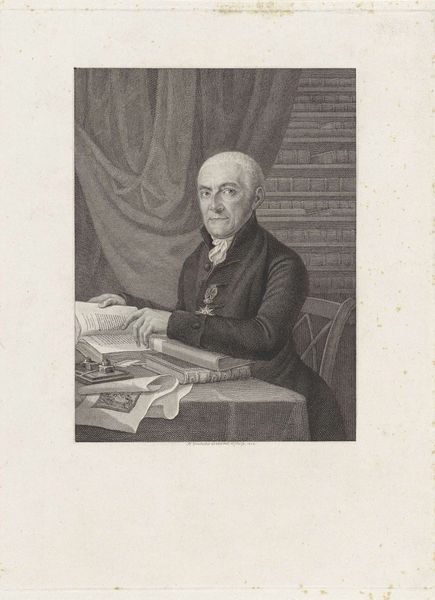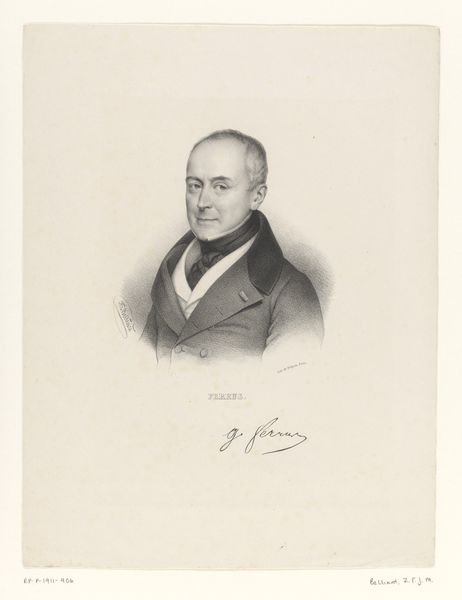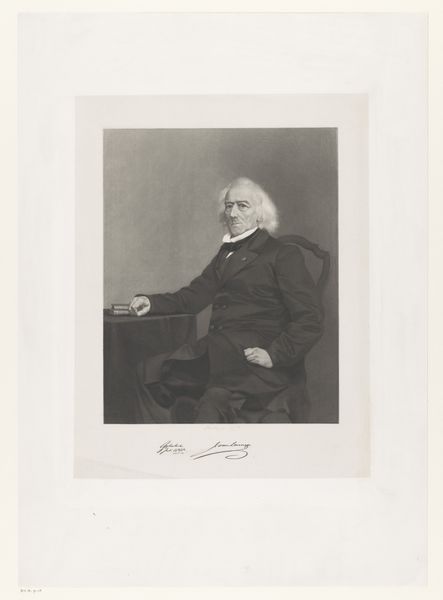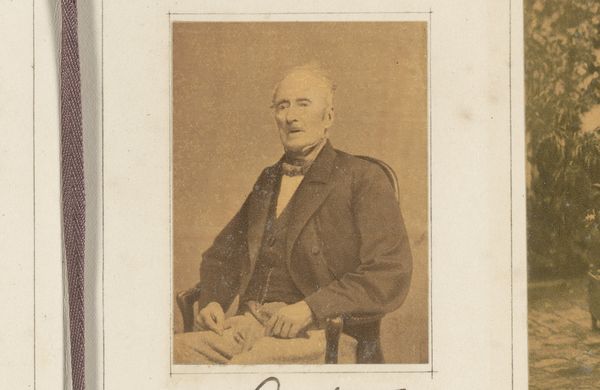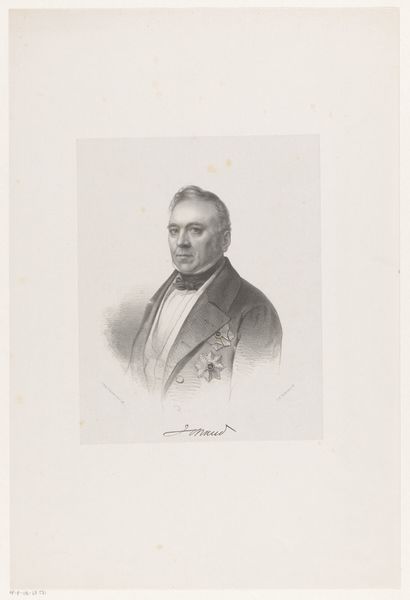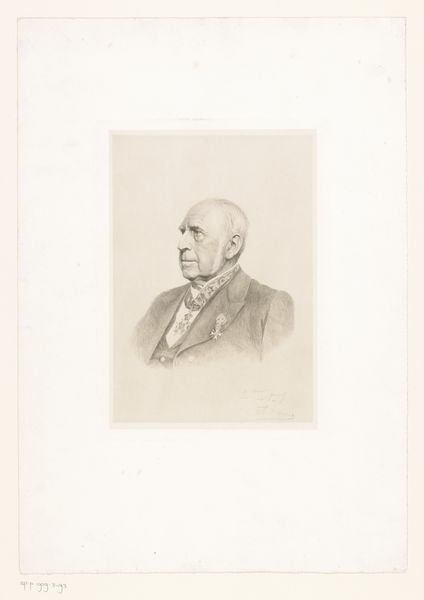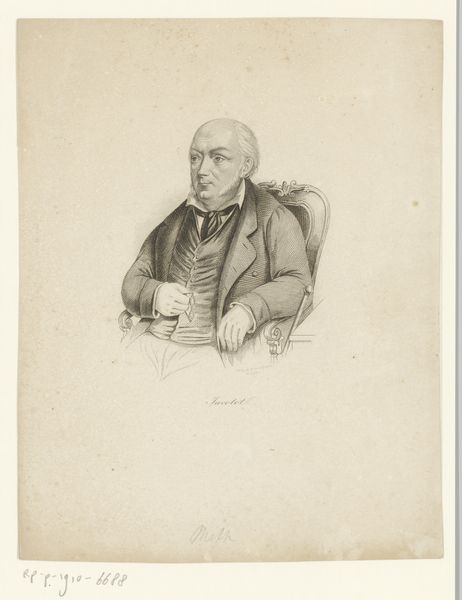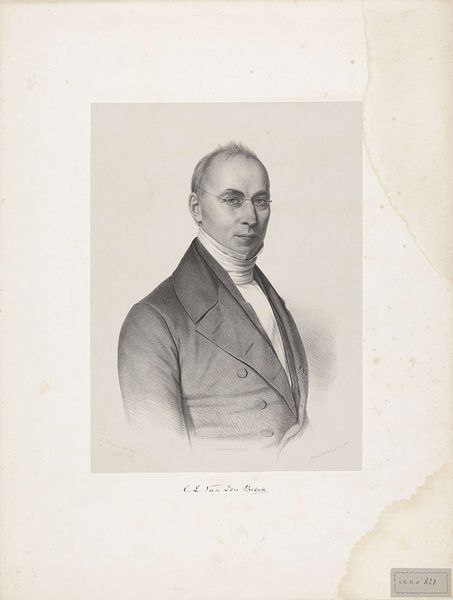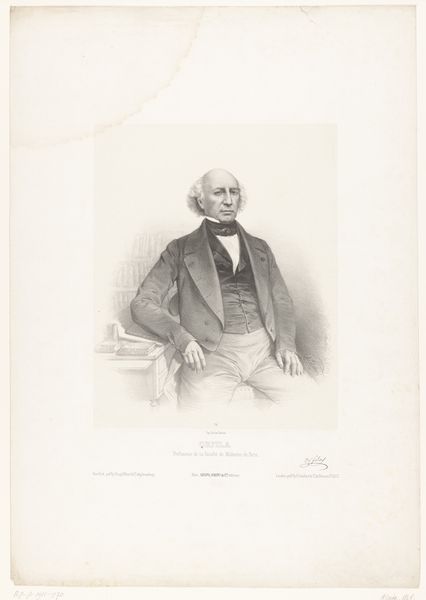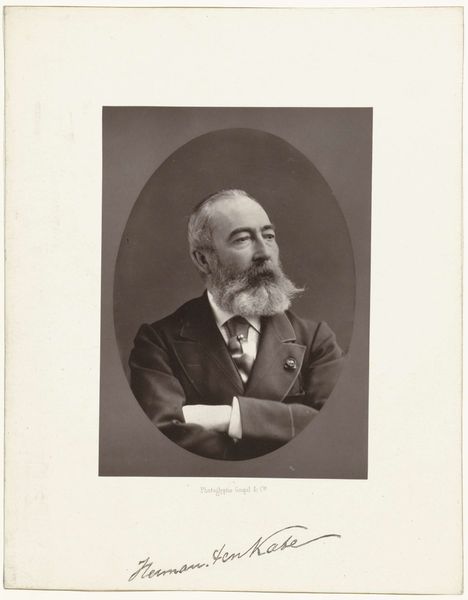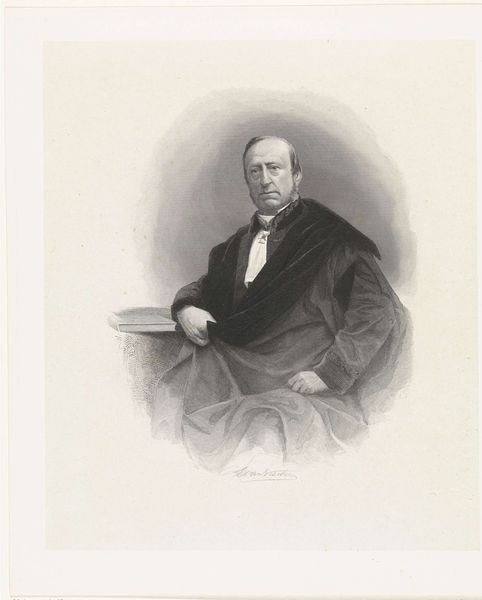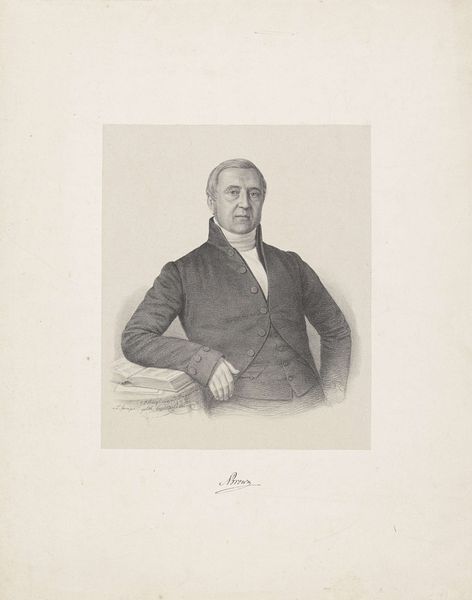
print, engraving
#
portrait
#
aged paper
#
16_19th-century
# print
#
portrait reference
#
cover design
#
history-painting
#
academic-art
#
engraving
#
realism
Dimensions: height 560 mm, width 448 mm
Copyright: Rijks Museum: Open Domain
Curator: Standing before us is an engraving from 1863, attributed to Joseph Schubert: "Portret van H. Sauveur." It's part of the Rijksmuseum collection. Editor: Immediately, there's a compelling gravity to the image. The chiaroscuro effect of the light and shadow on his face really draws you in. Curator: Indeed, Schubert utilizes meticulous detail in the engraving process, resulting in subtle tonal variations across the composition. Look closely at the play of light on Sauveur's face, delineating his features and giving him an almost sculptural presence. Editor: Considering it's a print, I’m thinking about the labor involved. Each line painstakingly etched—think of the hours dedicated to reproducing this image! And the dissemination! It would've allowed wider access, transforming the very consumption of this portrait. Curator: That's an insightful point. The meticulous craft evident in each precisely etched line works together to produce not merely a likeness but a study in dignified bearing, perhaps an echo of the Academic art ideals that were in vogue. Editor: Beyond aesthetics, who *was* H. Sauveur, and how was he connected to the means and support structures that allowed his portrait to be created? Was it for personal use, political propagation, maybe scholarly prestige? Curator: The portrait inscription reveals that H. Sauveur was a "Professor at the University of Liege," granting context that might hint at this portrait's original function: it was maybe intended as an official likeness to celebrate his place in academia, reflecting the subject’s role within broader structures. Editor: Precisely. Viewing it not as a isolated work, but as a manufactured artifact, embedded in the context of academic structures—a visual product that was distributed through an elaborate chain. The work transforms. Curator: Thinking of it as an artefact is important. Thank you for revealing fresh ideas and how process reveals substance. Editor: And thank you. Thinking beyond formal constraints really helps to understand this fascinating artwork in its historical context.
Comments
No comments
Be the first to comment and join the conversation on the ultimate creative platform.
